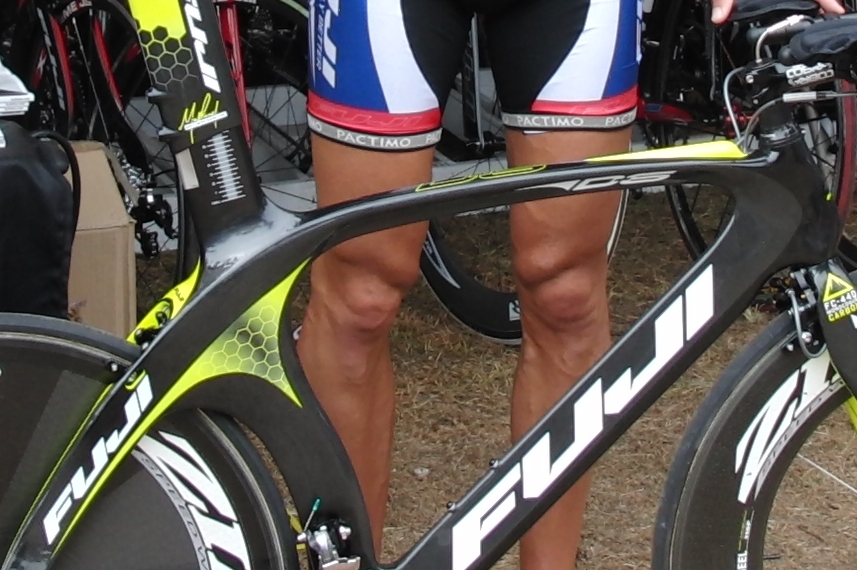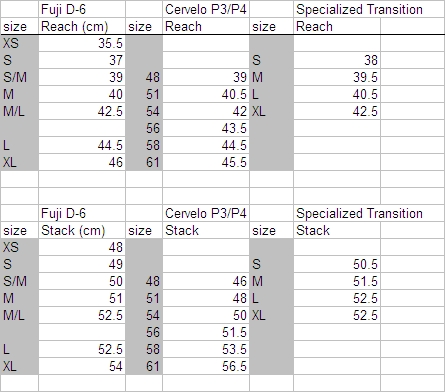The Fuji D-6: A Striking Newcomer to the High-End Tri-Bike Scene
Fuji’s new D-6 slaps you in face with its bold, organic lines. It just doesn’t look like anything else out there, which is refreshing in today’s ever more convergent aero bike market. So right away you have to give Fuji credit for breaking some new ground. The D-6’s top tube and seat stays form a single, elegant, unbroken arc. The entire frame “diamond” is “dished out” from the side. Even the fork is oddly bulgy and curvaceous. Again: organic. With a touch of Alien perhaps. The honeycomb graphics just add to the effect.
So at least in my opinion this a cool-looking bike. I got to check out Matt Reed’s personal D-6, and was graciously offered a ride on it, which unfortunately just didn’t work out between my busy Kona schedule and Fuji/Matt’s. DOH! And the worst part is the potential speed absorption I gave up.
Ok – so it’s an interesting looking bike. What of its performance features? Fuji enters new territory here too with the D-6’s unique brake arrangement and cable routing. The front brake cable enters the stem cap and re-emerges from the inside of the right-hand fork blade, traveling from there to the behind-the-fork front brake. This is an admirable attempt to make the front brake and cable invisible to the wind, but it could be at the expense of a maintenance nightmare. I say COULD, because I haven’t worked on one. Too, the Cervelo boys will tell you that none of this makes much aero difference, hence their standard front brake on the P4. The other cables enter a port in the top tube behind the stem, another feature becoming standard among aero bikes.
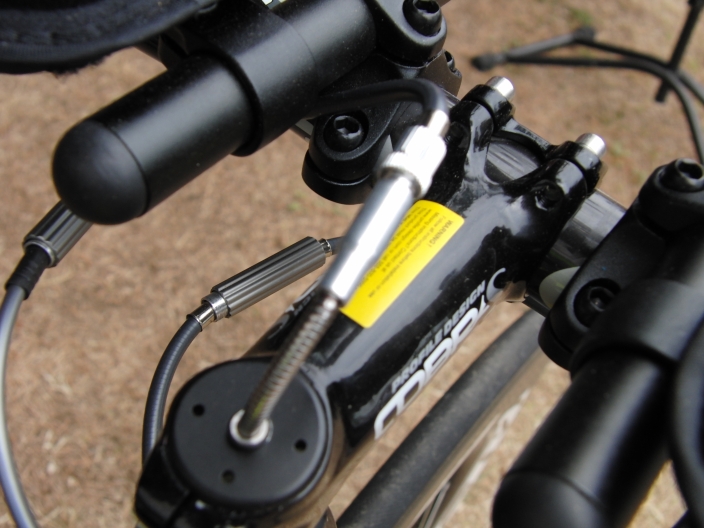
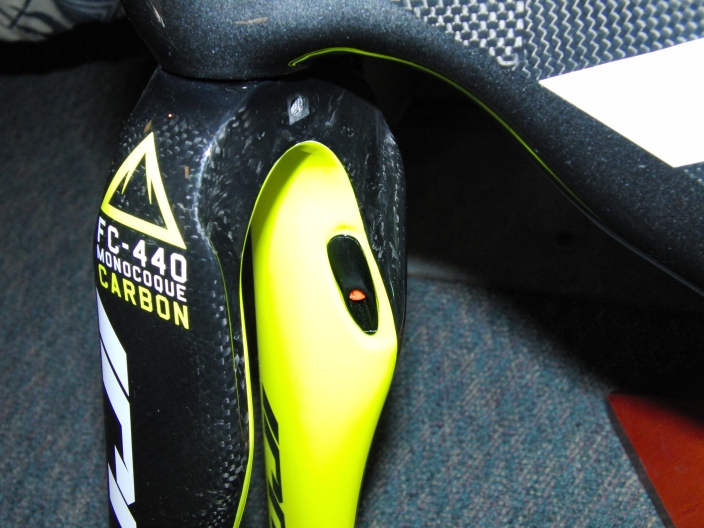
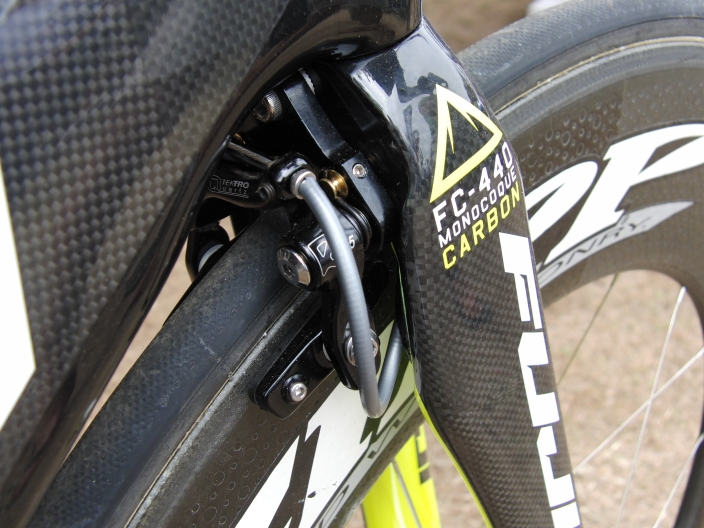
The rear brake also receives special treatment, being hidden/shrouded within the seat cluster of the frame. This also eliminates the usual exposed loop of cable housing at the rear brake. However, it does force the frame to be quite wide and wedge-like in this area. With others (Cervelo, QR), working hard to smooth and narrow this area, it brings up the question of whether this is more “eye-dynamic” than aerodynamic.
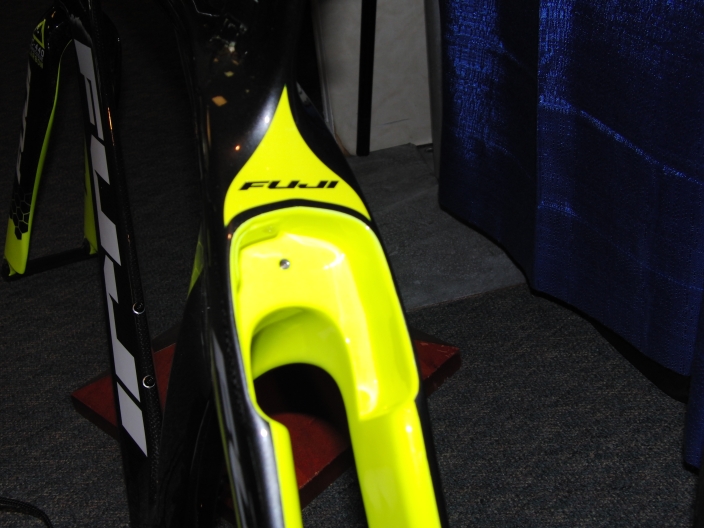
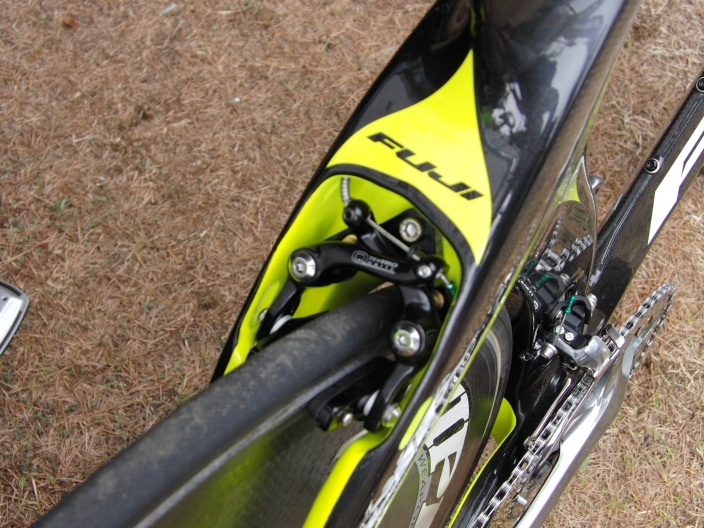
The frame incorporates the new rage of the cycling industry, a fixed seat mast with external sleeve. The mast has a detailed seat height scale graphic, but it would be nice if the bottom edge of the mast sleeve was parallel to the measurement marks. The sliding seat clamp allows a wide range of seat angles from 74-80 degrees around the frame mast’s 76 degree angle. One nice feature is that you can adjust saddle fore/aft and saddle tilt independently.
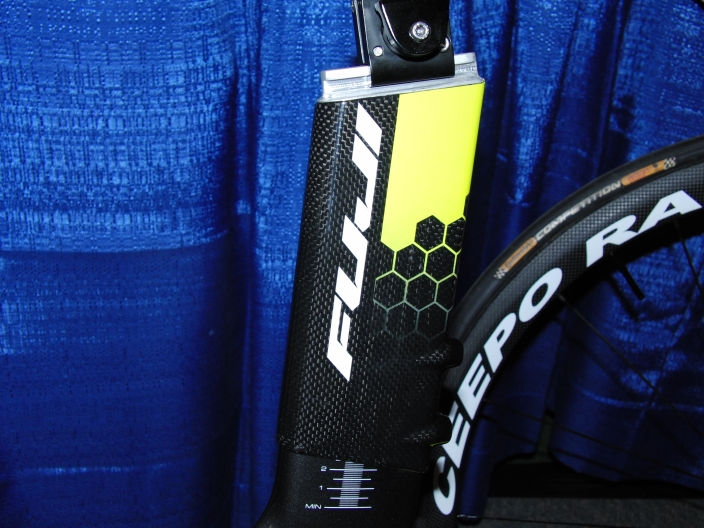
One of the striking aspects of the frame is its broad seat stays, which is the opposite of what we see from other bike manufacturers. The frame design overall looks like it would be quite resistant to lateral flex at the bottom bracket, but I wonder about the surface drag of the wide seat stays and interaction with the rear wheel.
Now, this frame was wind-tunnel tested/developed, but I am not sure how much was before and how much was after the fact. It looks generally aero, but I have to question the rear brake shroud / seat cluster area. It gets pretty wide back there, and then just comes to a squared-off trailing edge. To me this spells turbulent flow and drag. Moving fluids don’t like abrupt edges or wide shapes perpendicular to flow. The fluid tends to swirl around behind such areas looking for a place to go, and this causes a low pressure area and hence drag. Maybe this is not what happens on the D-6, but it sure looks like it would.
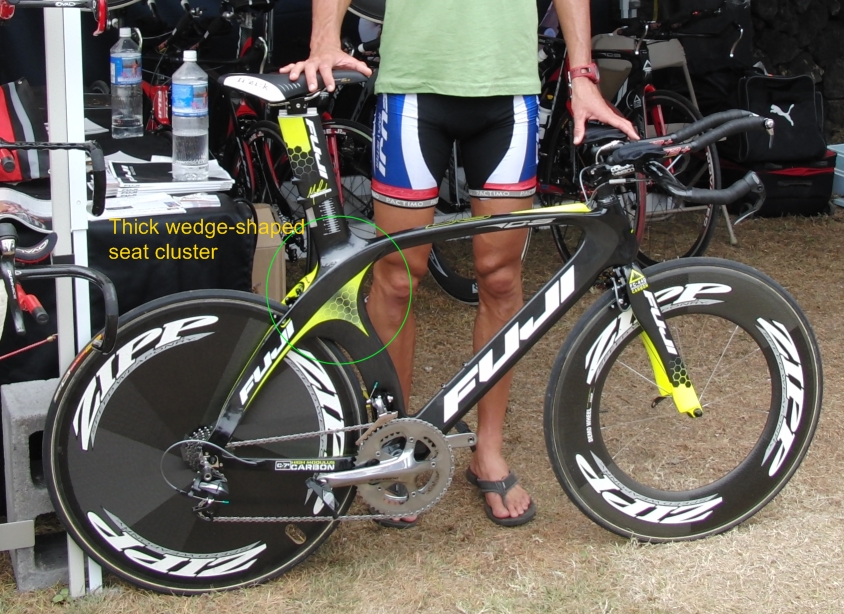
Finally, I must address sizing. Fuji is offering a wide range of sizes, with a somewhat schizo geometry range. I tend to break tri frames up into two categories: the “long and lows” (Cervelo, Kestrel, Felt) and the “short and highs” (Specialized, Trek). When I say “long or short” I refer to the frame’s “reach”, or the horizontal distance from the BB to the center of the headtube. “Stack” refers to the vertical height of the top of the head tube above the BB. I also tend to use Cervelo’s geometry as the gold standard for forward, aero positioning. Fuji offers the D-6 in reaches that start extremely short and extend all the way beyond that of a 61 P-3. However, because they opted to stick with 700c wheels for all sizes, the smallest frames have high stacks, so they fit into the “short and high” grouping. At the big end, the Fuji’s enter the “long and low” category, with the XL frame being .5cm longer in reach yet 2.5 cm LOWER in stack than the P3. Now that’s long and low!
Here is a comparison table of the D-6, P3/4, and Specialized stack and reach measurements:
Note several things:
- The XS D-6 has the shortest reach I’ve seen at 35.5 cm, yet it’s stack is equivalent to a 51cm P3. With 700c wheels, I’d be concerned about toe-overlap on this frame. That aside, it might be the only frame out there that would fit a very small person with long legs…
- The S/M thru XL range of the D-6 more or less follows the reach range of the P3. Note however how tight the reach range is for the Transition. The XL is only equivalent to the M’L Fuji or 54 cm Cervelo! I would need a 140-150 stem to ride the XL transition…
- On the small end, the D-6’s stacks are much higher than Cervelo’s. Again, the smaller bikes are better suited to short-torsoed long-legged riders.
- Note that the M/L Fuji and the XL Transition have identical stack/reach measurements.
However, the two largest sizes of the D-6 are similar in reach to the Cervelo but notably lower, so these would be better suited to large riders with very aggressive positions (a lot of drop), or large riders with shorter legs.
What’s the bottom line? Make sure you know what stack and reach you are looking for – it’s clear that bike manufacturers are all over the map with sizing. The “size”, whether it be 54cm or “L” or even “kinda big” means NOTHING. Know your stack and reach requirements and you’ll be good.
The D-6 is available in a SRAM Red-equipped Pro model with pricey Reynolds carbon clinchers for $8000 (ouch), a Rival equipped model for $4500, or a Matt Reed signature frameset for $3300. The two lower price points match the P3, while the Pro model vaults past the P4 by a good bit, probably due to the wheels.

